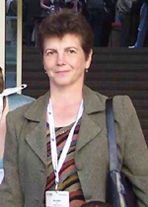INLFPR is proud to be a partner in the BioCombs4Nanofibers H2020 project! The vision of the project is to adapt and convert the biological nanostructures into a technical process to create future tools and devices with controlled antiadhesive properties to handle and process nanofibers.
Grant agreement ID: 862016
Project duration: 1 October 2o19 - 3o September 2o22
Overall budet: € 3 049 050 (€ 420 000 for INFLPR)
Call for proposal: H2020-FETOPEN-2018-2019-2020-01
Project partners:
JKU - Johannes Kepler Universität Linz, Austria
RWTH - Rheinisch-Westfälische Technische Hochschule Aachen, Germany
FORTH – Foundation of Research and Technology Hellas, Crete, Greece
BAM – Bundesanstalt für Materialforschung und -prüfung, Berlin, Germany
INFLPR - National Institute for Laser, Plasma and Radiation Physics, Bucharest, Romania
Challenge: Nanofibers are constantly drawing the attention of material scientists and engineers as their surface-to-used-material-ratio is beneficial for, e.g., medical applications. However, technical nanofiber processing, transportation or even simple things as spooling is inhibited by their attraction to any surface by van der Waals forces, the adhesive forces also enabling geckos to stick to the wall. Recent research aims for scale-up of the controllable production of nanofibers though have not enabled an easier handling and thus their application is still limited. A specific kind of nanofibers are nanofibrous protrusions of adherent cells and microorganisms. The interaction of these fibers with nanostructures is a key feature for their controlled adhesion at natural or artificial surfaces.
Inspiration by nature: One major problem for handling of nanofibers is their stickiness to almost any surface due to van der Waals forces. However, there is a biological example to show how to tackle this problem in the future: cribellate spiders bear a specialized comb, the calamistrum, to handle and process nanofibers, which are assembled to their structural complex capture threads. These 10 – 30 nm thick fibers do not stick to the calamistrum due to a special fingerprint-like nanostructure. This structure causes the nanofibers to not smoothly adapt to the surface of the calamistrum, but rather minimizes contact and thus reduce the adhesive forces between the nanofibers and the calamistrum.
Radically new technological approach: The transfer of these bionic comb structures to a technical surface will enable that future tools for nanofiber handling (covered with such a nanostructure) are antiadhesive towards nanofibers. Similar nanostructures can hinder the adhesion of nanofibrous protrusions of cells or microorganisms, which may enable cell-repellent or antiseptic areas on medical devices and implants.
